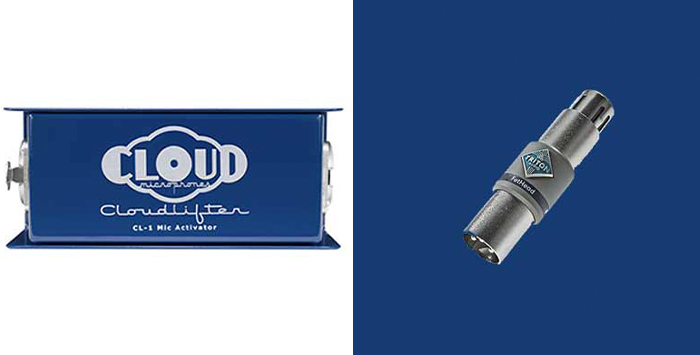
If you work with audio, even on an amateur level, it’s easy to run into problems with your gain. If you’re new to the field, it is easy to buy the wrong equipment or use your tools in the wrong way. The resulting gain problems eventually turn many towards a Cloudlifter or a Cloudlifter alternative.
If you’re looking for an alternative to a Cloudlifter, chances are you already know what it does and how it works. We cover this extensively in our What Does a Cloudlifter Do article, but we’ll discuss it a little here.
Since its 2010 release, the Cloudlifter has become the go-to device for boosting low sensitivity dynamic or ribbon microphones. It is a device that acts like an amplifier and boosts your mic signal before it reaches the preamp.
It also provides some impedance loading for dynamic and ribbon mics. The net effect of this is a 25dB increase in the gain of your microphone.
A Cloudlifter is powered by drawing phantom power from a preamp, external phantom power unit, or other devices via an XLR cable. It needs 48v of phantom power.
Cloudlifter gained popularity in the market because of the emergence of excellent but low signal microphones such as the Shure SM-7B.
Is the Cloudlifter necessary? Many users buy a Cloudlifter before they’re sure they even need one and end up spending a lot of money for a marginal increase in gain levels. There are a few things to consider before getting a Cloudlifter or a Cloudlifter alternative.
First, you have to make sure the microphone you use is compatible with a Cloudlifter. Cloudlifters don’t work with condenser microphones as they require phantom power.
Condenser microphones are usually very loud and don’t require a Cloudlifter anyway. If you’re having gain problems with a condenser, you should perhaps look elsewhere along your audio chain.
You need to make sure you’re using the microphone correctly and you’ve turned up the gain knob high enough. If you use a preamplifier, you want to check on the settings or connection.
Your budget also matters. The Cloudlifter CL-1 costs $150, so it’s a relatively low-cost option for some extra gain, but still a significant amount of money for beginners and might not be entry-level gear.
If you are using a low output mic that’s hard to power and you need an inexpensive workaround, chances are that you need the help of a Cloudlifter or a Cloudlifter alternative.
There are many reasons why users may want an alternative to the Cloudlifter. Since 2010, many companies have emulated and improved upon Cloudlifter’s technology. Some alternatives are faster, cheaper, and have additional features that users find useful.
The Cloudlifter might come off as too pricey for newcomers. Others find it a little old-fashioned for modern audio sensibilities. Some users like to use their devices in the field, and may find the Cloudlifter a bit too heavy.
Now, let’s talk about the popular Cloudlifter alternatives.
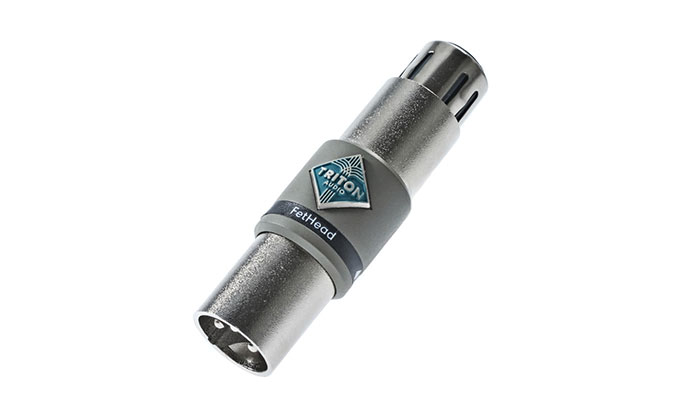
The Fethead is a popular Cloudlifter alternative. If you are looking for a cost-effective, low-noise inline mic preamp that can work with your low output microphones (dynamic and ribbon mics), then the Fethead is a good bet.
At $75, The Triton Fethead provides the cleanest, high-quality gain at half the price of a Cloudlifter.
It is very small and light, which is something that appeals to modern users. Its compactness and lightness also come in handy if you’re using a mic stand and you don’t want any clunkiness or interference.
Fethead has a balanced XLR input and output, which makes it a perfect fit for use anywhere, whether in your home studio or during a live recording.
The Triton Audio Fethead is as easy to use as the Cloudlifter. All you have to do is insert it along into the signal path that lies between an XLR cable and your dynamic or ribbon mic. It then uses 24-48 volts of phantom power to produce up to +27dB of clean gain. This improves your signal along the way to its endpoint.
Also, its circuit utilizes phantom power like the Cloudlifter. It also has the added benefit of shielding said phantom power from your ribbon microphones if you use one (a ribbon mic can be damaged by phantom power).
It features four junction-gate field-effect transistors (JFETs, which are among the quietest amplifying elements). These boost your signal the same way FET amps in condenser microphones boost the audio signal.
The Fethead range consists of many models with different features for different applications. There have been reports of power interference between microphones and the XLR cable but this hasn’t been shown to be a problem.
These inline preamps can offer you around the same level of quality gain at a lower cost than the Cloudlifter.
We wrote a short review where we compared FetHead vs Cloudlifter, so if you want to learn more about it – feel free to read it!
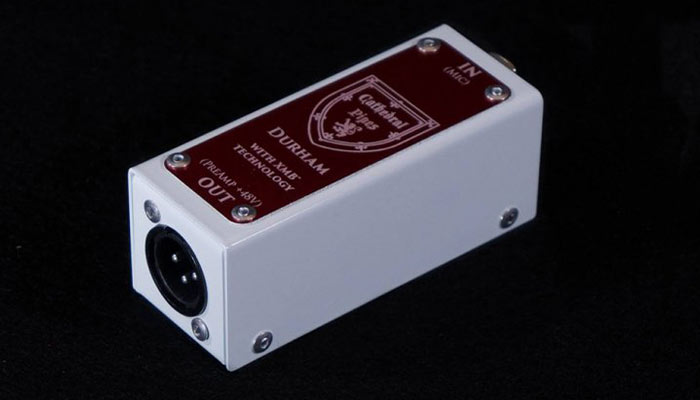
This simple micro amp buffer is another Cloudlifter cheap alternative that provides up to +20dB of clean gain boost.
The Durham MKII by Cathedral Pipes is even cheaper than the Triton Audio Fethead at $65.
This device also works by taking 48v of phantom power and running it through a JFET. It possesses Neutrik connectors alongside a powder-coated steel chassis that give it a trusty sturdy look.
It doesn’t connect directly to your ribbon or dynamic microphone and in that way it is similar to the Cloudlifter as it will require an additional XLR cable. Durham’s single-channel design makes it capable of transforming low-level microphone signals into line-level connections.
The Durham MKII provides only +20dB of additional gain, but that should be enough for most cases and reducing your microphone’s noise floor.
The Cathedral Pipes work best with mics that have lower gain mic preamps like the Shure SM-7B. The Durham is a good bet for beginners or other users who don’t want to shell out a lot of money or don’t need a lot of transparent gain. It is also considerably cheaper than the CL-1 while being stylistically similar.
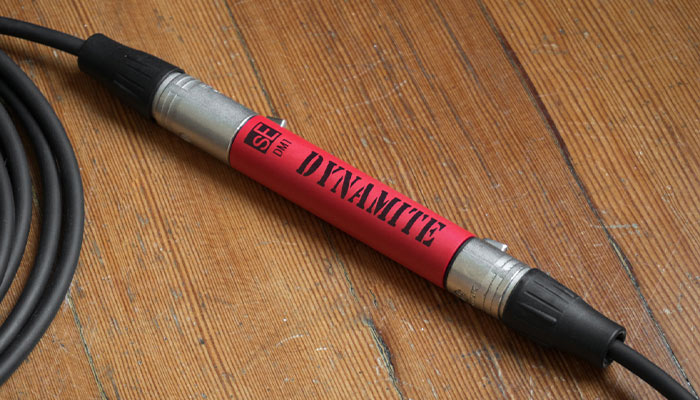
The Dynamite DM-1 from sE Electronics is another alternative that offers a clean gain boost of up to +28dB.
This mic activator is made with grade high FETs which results in a very low noise floor that it is popular for. It adds a clean and neutral gain boost for your dynamic or ribbon microphone.
The DM-1’s design allows for it to be a compact direct-to-mic option unlike the Durham and is very similar to the Fethead product design.
It attaches effortlessly to the end of your mic’s XLR input without interfering with an existing connection. The Dynamite DM-1 is all metal, with its XLR connectors being gold plated to ensure reliable signal connection.
This active inline preamp has the lowest impedance enabling it to drive extended wire runs while eliminating buzz and RF interference.
When using this device, it is important to make sure that the mic gain signal is not too hot before pairing it with the mic or audio interface you want to use. Distance far away from the mic can cause clipping resulting in poor audio quality.
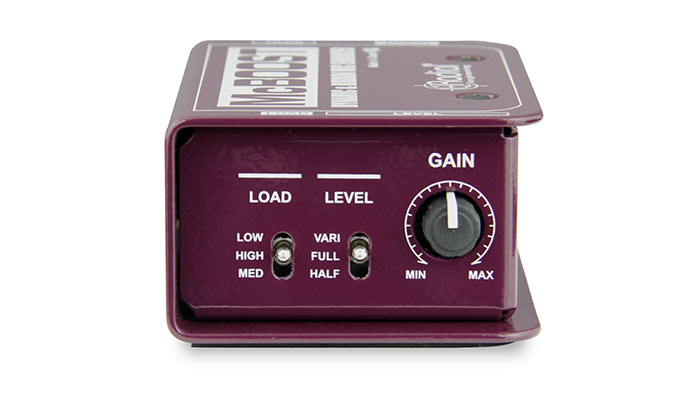
The Radial McBoost differs from all the other models by being more expensive than a Cloudlifter. So this is not a device you get because you’re looking for a cheaper Cloudlifter alternative.
The Radial McBoost contains switches that control load and level settings, as well as a gain knob that controls the gain strength when the level switch is set to variable.
This expensive alternative is a typical mic activator that provides a gain boost of up to +25dB for low-output dynamic and ribbon mics. It is designed with a 14-gauge steel beam inner frame and makes use of quality batch painted components due to its flexible features.
This flexibility makes the McBoost stand out and allows for you to experiment with different input impedances. All you have to do is connect the McBoost in-line using normal XLR cables, turn on 48V phantom power, and choose from three impedance settings to manipulate your gain at will.
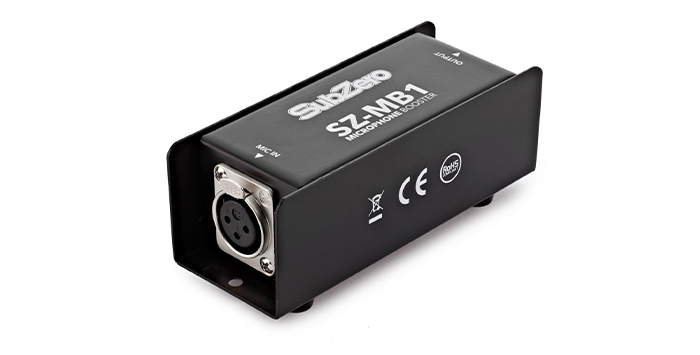
The SubZero Single Channel Microphone Booster is another cheap and easy-to-use alternative to the Cloudlifter that works great at boosting the signal of low-output microphones.
The Single Channel Microphone Booster needs phantom power like the other devices. Similarly, it doesn’t transfer any power to the mic, so your ribbon microphones are safe.
The SubZero Single Channel Microphone Booster is reliably built with sturdy metal construction. It is also quite compact, making it easy to lug around and adding only minimal clutter to your setup.
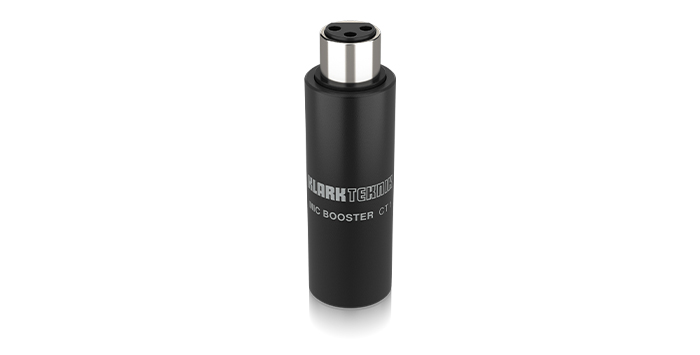
The Klark Teknik CT 1 is a cheap way to give your microphone audio signal an easy boost. This compact booster adds 25dB of extra gain to your low output microphone, letting you maximize your sound with no hassle.
The CT 1 is very simple to use. It is a lightweight device weighing about 100 grams. It plugs directly to your dynamic or ribbon microphone output or cable. Then hook it up to your mixer or recording device through another cable. The CT 1 is powered exclusively by the usual 48V phantom power.
| Gain Boost | Number of Channels | Inputs/Outputs | Weight | Dimensions (H/D/W) | |
| Triton Audio FetHead | +27db | 1 | 1 XLR in, 1 XLR out | 0.55lb | 4.7″/1.1″/1.1″ |
| Cathedral Pipes Durham MKii | +20db | 1 | 1 XLR in, 1 XLR out | 0.6lb | 4.6″/1.8″/1.8″ |
| sE Electronics Dynamite DM-1 | +28db | 1 | 1 XLR in, 1 XLR out | 0.176lbs | 3.76″/0.75″/0.75″ |
| Radial McBoost | +25db | 1 | 1 XLR in, 1 XLR out | 1.25lbs | 4.25″/1.75″/2.75″ |
| SubZero Single Channel Microphone Booster | +30db | 1 | 1 XLR in, 1 XLR out | – | 4.72″/1.85″/1.88″ |
| Klark Teknik CT 1 | +25db | 1 | 1 XLR in, 1 XLR out | 0.22lbs | 3.10″/1.0″/0.9″ |
When looking for a portable device to maximize a low output microphone, many turn to a Cloudlifter. But, as we’ve discussed above, there are a lot of useful alternatives.
Some of these devices offer extra features and perhaps more gain than the Cloudlifter, but the most popular reason people look for alternatives is pricing.
A lot of the devices featured above are comparatively cheaper than the Cloudlifter. That said, in choosing the best alternative for your work, you have to take into consideration what you want out of the device.
If you can afford it, an actual Cloudlifter is still the trusted device for most, so you should probably get that. If you are just starting out and don’t want to shell out a lot of cash, you should make sure a Cloudlifter is what you need first, then choose from the guide above.